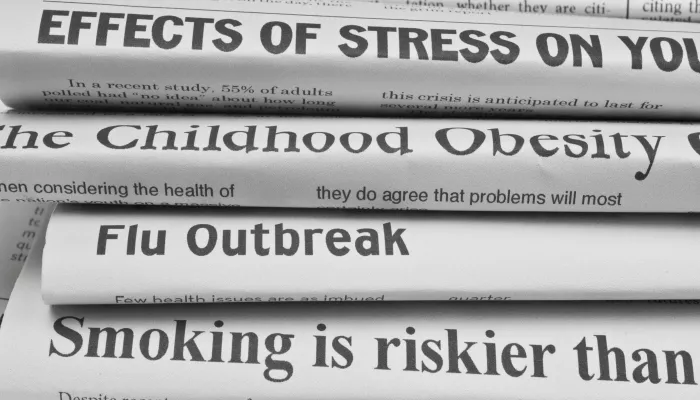November 20, 2008 - Senior citizens in California's central valley region have the worst health in the state and may provide a snapshot of the challenges California faces over the next two decades - a time in which the elderly population is projected to double.
Diabetes, obesity, falls, as well as low mammography rates and sedentary lifestyles among older adults are all more acute in the San Joaquin Valley, according to a new report, Trends in the Health of Older Californians, by the UCLA Center for Health Policy Research.
Throughout the state, older adults are increasingly likely to report cancer, obesity, diabetes, high blood pressure, high cholesterol and the need for help with emotional problems. The use of medical care services also increased, including the percent of older adults who went to the emergency room as well as the percent that made monthly or more frequent doctor visits.
"This is a bad way to start the new century," said the report's author, Steven P. Wallace, PhD. "Unless there is an increased focus on the prevention and management of chronic diseases, the promise of a healthy and happy retirement will be unattainable for millions of Californians."
The were some positive trends in the report, including improved screening rates for several types of cancer and a drop in the number of older California women taking hormone replacement therapy, drugs that have been linked to increased risk of cardiovascular disease and breast cancer.
This last change is linked to significant new information provided to doctors and their older patients about the dangers of hormone replacement therapy.
"It's an example of a concerted prevention effort that will have a long-term payoff in terms of better health and fewer health-care costs," said Wallace.
In the heavily Latino San Joaquin Valley, such doctor-patient prevention efforts may be harder due to problems in the health care system, language and cultural barriers, and limited community resources. In addition, fear of using government health services linked to immigration concerns, even among the documented and citizens, remains a significant barrier to preventative health care, Wallace said.
The proportion of older adults reporting diabetes in the San Joaquin region increased from one in six in 2001-just above the state average-to the highest in the state, with one in four of all older adults reporting that they have diabetes in 2005. The San Joaquin Valley is also the only region of the state where mammography rates worsened between 2001 and 2005. In every other region the proportion of older women with a recent mammogram increased.
The San Joaquin Valley also has particularly high rates of sedentary lifestyle, obesity and falls.
California's elderly population is set to become majority non-Caucasian as of 2030, with Latinos comprising among the largest ethnic groups.
The report looked at data gathered by the California Health Interview Survey (CHIS) over three different time periods: 2001, 2003 and 2005.
Among the findings:
- The San Joaquin Valley region has the highest rate of diabetes and reported high blood pressure among the elderly in the state: 25.7% and 63.9% respectively.
- In 2005, 41.8% of older women in the San Joaquin Valley region reported having no mammogram in the past 12 months. The rate was nearly 10 points higher than all other regions and a 19% change for the worse since 2001.
- After Imperial County, Kern and Stanislaus counties had the highest rate of diabetes among counties in 2005: 30.6% in Kern and 31.3% in Stanislaus.
- 23% of the San Joaquin Valley's elderly population is obese - more than three points higher than all other regions.
- 15.3% of elderly in the San Joaquin Valley reported a fall in the past 12 months - more than three points higher than all other regions.
- Almost one-quarter (23.9%) of low-income older adults in the San Joaquin Valley are food insecure, meaning that they have trouble during the month in obtaining sufficient nutritionally adequate food. This is particularly troubling given the fact that the Valley is among the most productive agricultural areas in the country.
The California Health Interview Survey (CHIS) is the nation's largest state health survey and one of the largest health surveys in the United States
The UCLA Center for Health Policy Research (CHPR) is one of the nation’s leading health policy research centers and the premier source of health policy information for California. UCLA CHPR improves the public’s health through high quality, objective, and evidence-based research and data that informs effective policymaking. UCLA CHPR is the home of the California Health Interview Survey (CHIS) and is part of the UCLA Fielding School of Public Health and affiliated with the UCLA Luskin School of Public Affairs.




